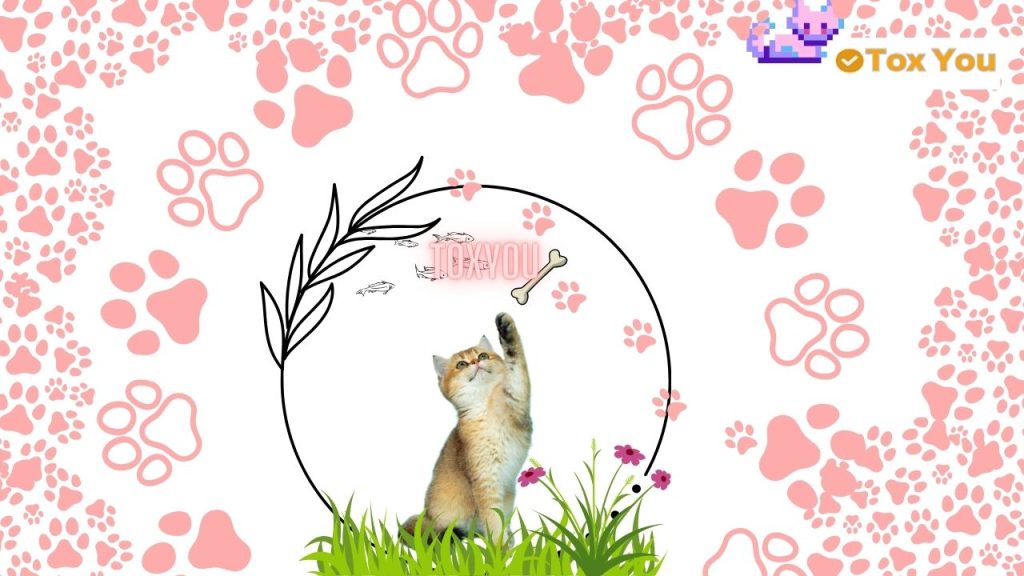Cats are good at self-maintenance. But even your fastidious feline can’t prevent some of these more common cat diseases and health issues.

1. Experiencing nausea
With so many potential reasons, vomiting is a rather common issue in cats. They can be anything from hairballs to infections, diabetes, urinary tract diseases, or swallowing anything dangerous or inedible (like thread).
Drooling and heaving in the abdomen are common symptomatic indicators. In case your cat keeps vomiting or shows signs of illness, it is advisable to contact your veterinarian promptly since vomiting can cause dehydration in cats. A sample of your cat’s vomit should be collected and brought to the veterinarian.
You cannot stop all of the potential causes of vomiting in cats since there are so many of them. However, there are a few things you may do to lessen the likelihood of some of the more prevalent ones:
(a)Check for fleas on your cat.Vomiting can result from intestinal parasites like tapeworms, which are spread by fleas.
(b)Give the correct nutrition to your children. It’s advisable to continue using diets made specifically with cats’ nutritional needs in mind. Certain foods can make your cat ill, such dairy products and undercooked or raw meats.
(c)Eliminate hairballs. Regular brushing and combing with a comb can help your cat get rid of excess hair before it may be swallowed. Another option is to use a laxative solution designed specifically for hairballs; a dab applied to their paw once a week or so will aid in lubricating their digestive system.
(d)Put things that aren’t edible out of reach. Keep an eye out for and gather up anything like rubber bands or thread that your cat can find attractive to chew on and might cause vomiting if eaten. Keep your cat away from items like human pharmaceuticals and toxic houseplants.
2. Diseases of the Lower Urinary Tract in Felines (FLUTD)
Feline lower urinary tract disease (FLUTD) is a collection of feline illnesses with various origins that affect up to 3% of cats examined by veterinarians, according to some estimates.
Both male and female cats can get FLUTD, and cats who eat dry food or are overweight or unfit are more likely to have it. A cat’s risk of FLUTD can be increased by stress, having several cats in the house, and abrupt changes. The type of FLUTD your cat has will determine how it is treated. Symptoms of FLUTD include:
- Increasing one’s intake and holding back on pee
- Having more frequent urination
- Pee stained with blood
- Urinating in strange locations
- Crying while taking a urinal
licking the region surrounding the bladder (usually due to discomfort)
- Depression
- Lack of water
- Absence of hunger
- Throwing up
If your feline is unable to urinate, it is always an emergency. If you think your cat may have a urinary tract issue, give your veterinarian a call right away.
To reduce the likelihood of FLUTD in your cat:
- Make sure you always have access to fresh, clean water.
- Consult your veterinarian about your cat’s ideal diet. They could advise you to feed your cat canned food or prescribe a particular diet.
- Give your cat little, frequent meals.
- Cut down on stressful situations. Try not to alter your cat’s routine much.
- A clean litter box should be available for your cat to use in a quiet area of the house.
3. Mosquitoes
An extremely prevalent exterior feline health issue is fleas. However, it’s one that is simple to treat. Some indicators that your cat has fleas are:
- Flea filth (which resembles small black spots) on its skin
- Never-ending scratching
- Regular licking
- Inflamed or red skin
- Hair thinning
- Heated areas or infections on the skin
Although they usually don’t, fleas can survive up to a year. If the infestation gets bad enough, your cat may get anemia, therefore treat the flea issue and avoid new infestations.
Consult your veterinarian about the best flea control for your feline. Oral medicine, powders, foams, and topical medicines are among the available treatments.
It’s important to keep in mind that flea treatments only eliminate fleas that contact your cat. In order to avoid fleas,
- Keep your feline indoors.
- Every day, give your baseboards, upholstered furniture, carpets, and rugs a thorough vacuuming.
- Once a week, give your cat’s bedding a wash in hot, soapy water.
4. Verticilla
Among the most prevalent health issues affecting cats are tapeworms. These parasites may reach a length of two feet and reside in your cat’s small intestine. They often disintegrate as your cat passes them since they are composed of parts known as proglottids. A whole worm is quite uncommon to be seen. Usually, you will just see the portions.
Vomiting and weight loss are two possible yet difficult-to-identify symptoms of a tapeworm infection. Examining your cat’s feces, the area surrounding its anus, and its sleeping spot are the simplest ways to determine whether it has tapeworms. Typically, tapeworms emerge from your cat’s anus during a state of relaxation or slumber. Your cat probably has tapeworms if you notice little white worms or what appear to be sesame seeds or rice grains.
If the infection in your cat is severe, you could notice other tapeworm symptoms like:
- Pain in the region of the anus
- Loss of weight
- Diarrhea and vomiting
- Anemia
- Lack of water
- Unable to prosper
How Do Tapeworms Infect Cats?
Cats may consume fleas carrying tapeworm larvae when grooming themselves. The tapeworm larvae mature into adult worms within the intestines of cats.
Infections with tapeworms are more common in cats older than six months. If a kitten has fleas, they may get tapeworm infections.
Are Cat Tapeworms Containing Humans?
Tapeworm infections can spread from cats to people. You would have to ingest a flea carrying tapeworm larvae in order to get infected.
Tapeworm infections are more prevalent in youngsters. The proglottids are seen in the child’s stool or in and around their anus. When your kids play with your cat, teach them to wash their hands. Play places where cat excrement may be present should not be used by your children.
How is a cat’s tapeworm infection treated?
Every one to three months, you must provide a deworming treatment to your adult cat. Consult your veterinarian about the best dewormer to use for your cats. Many deworming solutions are available in supermarkets and pet stores, but not all of them may be suitable for your cat’s particular kind of worms or safe for your cat to use.
Praziquantel is a medication that is often administered to cats as an injection or as pills. Cats can be treated for tapeworms with praziquantel. The medication aids in the tapeworms’ dissolution in the intestines.
How Can Cats Avoid Contracting Tapeworms?
It is quite easy for your cat to get tapeworms again. You can take the following actions on a regular basis to prevent tapeworm infections:
Manage the transporters. Eliminate ticks and fleas, and get rid of mice and other rodents that might harbor tapeworm larvae that could infect your pet. Use a flea preventive on your cat on a regular basis.
Regularly deworm. Regular deworming will help to avoid reinfection in your cat.
Get rid of cat excrement every day. Pick up the excrement and pee clumps in your litterbox often and dispose of them in a plastic garbage bag. Regularly wash and clean the litterbox using a disinfectant that is safe for pets.
5. Loss of appetite
Your cat may need to defecate more frequently and their excrement will be runny, watery, or mushy when they have diarrhea. It could smell particularly foul and have a yellowish or greenish hue. Usually, diarrhea goes away rather soon. If it persists for more than a few days, there can be a major issue.
Changes in nutrition, stress, intestinal parasites, allergies, infections, liver or renal illness, cancer, and other conditions can all result in diarrhea in cats.
Give your cat lots of fresh, clean water if they’re having diarrhea so they don’t become dehydrated. After then, deny them food for a maximum of twelve hours. See the veterinarian if their diarrhea persists after a day. Take them immediately in case they
- Refuses to eat
- Are aching to go potty
- Are you throwing up?
- Void bloody or dark stools
- Feel like you’re feverish
- Are lethargic
6. Eye Issues
Here are a few signs that your cat may have vision issues:
- Teary eyes
- Accumulation of discharge in the eye’s corners
- The fur surrounding the eyes has tears on them.
- Blurry eyes
- White or red lines on the eyelids
- Squinting too much
- Licking one’s eye
- Third eyelid that is visible
There are several factors that might lead to ocular issues in cats, such as:
- Viruses and Trauma
- The state of inflammation
- Tinkeye conjunctivitis
- Ulceration on the cornea
- Lenses
- The glaucoma
- Eye conditions
Gently dabbing your cat’s eyes with a cotton ball dipped in warm water will help keep their eyes clean. Schedule a visit with your veterinarian if you see indications that your cat may have eye issues.
What constitutes a healthy cat?
There should be no growths or lesions on the lips or mouth. Coat: Needs to be spotless and glossy. Weight: Cats who are active are seldom overweight. Consult your veterinarian for guidance on feeding your cat the appropriate diet to help them stay at a healthy weight.
.
 Tox You It's all about earning solutions, News, Entertainment
Tox You It's all about earning solutions, News, Entertainment
